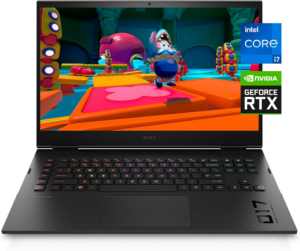Until recently, choosing a monitor for home use came down to just one or two variables for most people – to the casual computer user, size was really all that mattered. Whilst size often dictates resolution, many people weren’t overly concerned with it. In fact, when the LCD revolution first began to take shape, you could only run an average flat panel display at its native resolution or suffer horrible blocky artefacts.
Despite this, I would often visit the homes of family friends to fix their computers and find them running their new 17” panels at 1024×768 because “everything is too small at the default resolution [sic]”.
Buying A Monitor in 2021
Today, things couldn’t be more different – resolution is everything, and many people would rather have a 27” monitor with higher resolution than a 32” one with a lower resolution. Refresh rates, HDR, HDMI / DisplayPort support, and G-Sync/Freesync are just a few of the considerations we now must deal with. It’s not uncommon to arrive home with your brand-new monitor these days, only to find out that you can’t run it at its full potential without upgrading some other component of your computer.
The ESports Phenomenon
Apart from a blip in 2017 due to a number of cancelled tournaments, the eSports betting market has been growing consistently year-upon-year for more than a decade now. In 2016, the total size of the worldwide market was around $5.558 billion. Last year it reached $12.921 billion. Some estimates predict this could rise by as much as 1,500% by 2027, and whilst that sounds wildly optimistic, you only must look at the wider online gambling market to see that it isn’t completely outside the realms of possibility.
Monitors for E-Sports
You might be surprised to learn that eSports professionals have very different priorities to your average PC user – or even a casual gamer. Many eSports players will choose their monitor specifically based on the game they play the most, and those that participate in more than one title may even have multiple displays used for each individual game.
A Real World Example
Using the most popular eSports game Dota2 as an example, this Action Real Time Strategy (ARTS) game requires ultra-fast reflexes from both you and the other four members of your team. As a strategy game, resolution is critical, as it allows you to see more of the battlefield at once.
Even more important, you need an ultra-fast refresh rate paired with low input lag, a low response time, and as much contrast as your eyes can withstand – enemy units can easily blend in with the background on darker panels, making surprise attacks easier.
The majority of DOTA2 players choose ASUS monitors, with the 27” ROG Swift PG27UQ and ROG Strix 279Q being equally popular. Both have their strengths and weaknesses, but whilst the Swift has the edge on resolution at 3840×2160 (Ultrawide), the Strix features an ultra-fast IPS technology which brings the grey-to-grey response time down to 1ms – as fast as the best TN panels, which were the bread and butter of eSports competitors until very recently.
The Other End of The Spectrum
For other types of games such as fast, first-person shooters, having a 5K2K resolution simply won’t help you – you still need as much contrast as your eyes can handle, but you also need the fastest refresh rate possible – up to 300hz is becoming common on 1080p screens, which is what many professional Counter Strike: Global Offensive players are still sticking with.
Whilst TN panels are still being used by some purists, IPS technology has caught up to the point that many eSports players are finally making the switch. With the power of modern graphics cards, running at 2560×1440 still allows you hundreds of frames per second on an RTX3000 powered graphics card. GSync is essential once again – this technology locks the frame rate your graphics card can produce to the frame rate of your monitor, giving you the smoothest experience possible.
Another interesting difference between DOTA2 players and CS:GO players is the size of the monitor they go for – whilst DOTA2 players need larger screens – usually 27” or above, to cater for all that extra resolution – CS:GO players need to reduce eye-movement as much as possible, so will usually buy something no bigger than 24”.

















